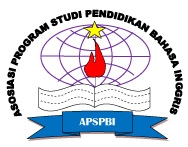THE APPLICATION OF ICE BREAKING ACTIVITIES IN TEACHING ENGLISH TO JUNIOR HIGH SCHOOL STUDENTS
Abstract
ABSTRACT
The paper entitled Ice Breaking Activities in Teaching English to Junior High School Students†was purposed to describe the process of ice breaking activities and the suitability of the ice breaking activities with the principles applied in teaching English. This research was conducted at SMPN 18 Kota Bogor by using descriptive qualitative research. The participant of this reasearch was one of English teachers of that school. The finding of this research described the process of ice breaking activities in teaching English and the suitability of the ice breaking activities with the principles. The ice breaking activities used were Tongue-twister, English Game, and English Songâ€. The ice breaking activity was started by dividing the students into several groups, telling the name of the activity, giving some explanations about what they had to do, and finally starting the ice breaking by choosing one member from several groups to repeat the sentence. The result showed that the ice breaking activities were usually started by telling the name of the activities, giving some explanations about what they are going to do, doing simulation and finally starting the ice breaking activities about five to twenty minutes. Furthermore, the process of ice breaking activities are mostly appropriate with the principles. The role of the teacher as the facilitator, the instruction given which is easy to understand, the suitability of the students level with the ice breaking activities, the time limit used, the atmosphere of the class, and the students interest toward lesson.
Keywords: Ice Breaking activities, English Teaching
References
Alwasilah, Chaedar. (2002). Pokoknya Kualitatif: Dasar-dasar Merancang dan Melakukan Penelitian Kualitatif. Jakarta: Pustaka Jaya.
Brown, H Douglas. (2001). Teaching by Principle: An Interactive Approach to Language Pedagogy. Sanfransisco: Pearson.
Flanigan, E. (2011). The importance of ice braking and warm up activities in English class. In international Journal of English Literature and Social Science (IJELS). [Online], Vol 3 (5), 6 pages. Available: 24455-the-effect-of-ice-breaking-technique-in-96061fbf.pdf [accessed May 24, 2014].
Harmer, Jeremy. (2007). How to Teach English. 2nd Edition. New York: Pearson.
Jenkins, Jon. (2001). The Dynamics of an Ice-breaker. [Online]. Available [on line] at http://www.albany.edu/cpr/gf/resources/Icebreakers-and-Introductions.html. [accessed May 24, 2015].
Kanu, O. (2011). New century public charter school. [Online]. Available [on line] at: kanu.kalo.org/reports/EOY%2007-08.pdf. [accessed June 15, 2015].
Leblanc, R. (2011). The function of warm up activities for learning English. In [Online]. Available [on line] at: http://www.ehow.com [accessed May 15, 2015]
Meleong, Lexy J. (2007). Metodologi Penelitian Kualitatif. Edisi revisi. Bandung: Penerbit Remaja Rosdakarya
Meleong, Lexy J. (2002). Metode Penelitian Kualitatif. Bandung: PT Remaja Rosdakarya.
Sapp, Kenn. (2007). What is an Icebreaker?. [Online]. Available [on line] at: http://creativeyouthideas/searchwarp.com/swa250303.html. [accessed June 10, 2015].
Slattery and Willis (2001). English for Primary Teachers: A Handbook of Activities and Classroom Language. [Online]. Available [on line] at: www.reasearchgate.net [accessed November 2018].
Ur, Penny (1996). A course in English Language Teaching. 2nd Edition. Cambridge: Cambridge University
Witskowki, George. (2000). How to Use Ice Breakers Appropriately in the Classroom. [Online]. Available [on line] at: http://www.ehow.com/how_2182048_use-ice-breakers-appropriately-classroom.html [accessed May 24, 2015].
DOI: 10.55215/jetli.v1i1.1489
 Abstract views : 3623
Abstract views : 3623
Refbacks
- There are currently no refbacks.
Copyright (c) 2019 JETLi | Journal of English Language Teaching and Linguistics Studies



